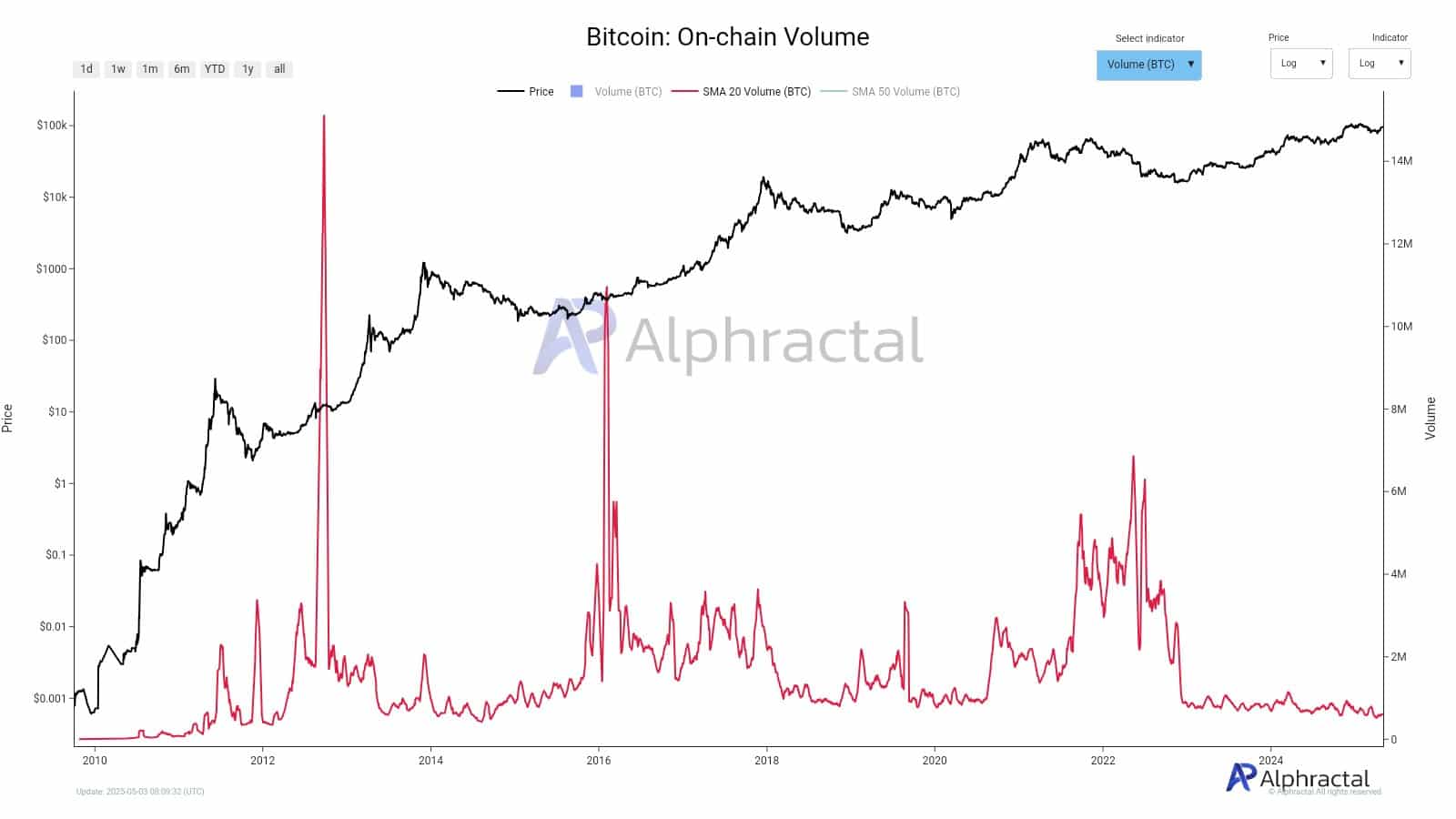-
Bitcoin has surged to unprecedented heights, now reaching $97K, yet its on-chain activity remains surprisingly low amidst this price surge.
-
Despite the bullish price trends, analysis shows six compelling reasons explain why Bitcoin’s network activity does not reflect its valuation.
-
According to Alphractal, the number of Active Addresses has fallen short, highlighting a disconnect between market enthusiasm and actual blockchain usage.
Explore why Bitcoin’s impressive price gains are not translating into increased on-chain activity, revealing six critical factors behind this phenomenon.
Six reasons behind Bitcoin’s stagnant on-chain activity
For starters, the current price appears heavily influenced by external market factors rather than genuine blockchain utilization. This is largely facilitated by institutional interest and significant capital inflows from Spot ETFs. Companies like MicroStrategy and investment firms such as BlackRock are accumulating Bitcoin through these vehicles, which emphasize investment rather than transactional use.
Secondly, the volatility of BTC has remained unusually low. This extended period of price consolidation between $92K and $95K has diminished the need for active wallet movement, resulting in a more stagnant on-chain environment. As many investors choose to hold their assets, fewer transactions are occurring.
Thirdly, certain exchanges may be inflating their reported trading volumes, contributing to an artificial sense of activity while genuine on-chain usage remains modest. This discrepancy highlights the potential misrepresentation of market conditions, leading to misguided confidence among investors.

On top of that, usage is shifting towards other blockchain networks. Platforms like Ethereum, Solana, and Base have attracted significant decentralized finance (DeFi) projects, memecoins, and staking activities. This migration indicates a shift in user preference, with many turning to these chains for higher engagement and visibility.
Additionally, Bitcoin’s traditional role as a payment network is becoming less relevant. As prices accelerate without a corresponding uptick in network activity, analysts caution that this trend may be unsustainable and could lead to corrections as the market adjusts to actual demand levels.
Finally, the rise of second-layer solutions like the Lightning Network has contributed to diminished on-chain activity. With transactions increasingly occurring off-chain, Bitcoin’s mainnet transactions are decreasing, leaving the blockchain in a precarious situation where Layer 2 demand outpaces traditional usage.
What does this mean for BTC?
The ongoing narrative in which price is perceived as the sole measure of Bitcoin’s health is misleading. Though price has rallied, it’s critical to assess the network’s growth and the shift in how Bitcoin is being utilized in financial markets. In periods of traditional retail growth, price rallies were historically supported by user engagement canvassing a wider demographic.
However, the current trend shows an increasing reliance on institutional investment, which could hinder Bitcoin’s long-term growth potential unless a resurgence of retail participation occurs. Should Bitcoin’s on-chain demand remain stagnant, its price appreciation might face inevitable structural limitations.
Conclusion
In conclusion, while Bitcoin’s ascent to $97K may seem triumphant, the underlying metrics indicate a grim reality for on-chain activity. This divergence underscores the importance of evaluating Bitcoin not merely as a financial asset, but as a technology designed for broad everyday use. Without a corresponding surge in transactional activity, the sustainability of Bitcoin’s price performance remains in question.
